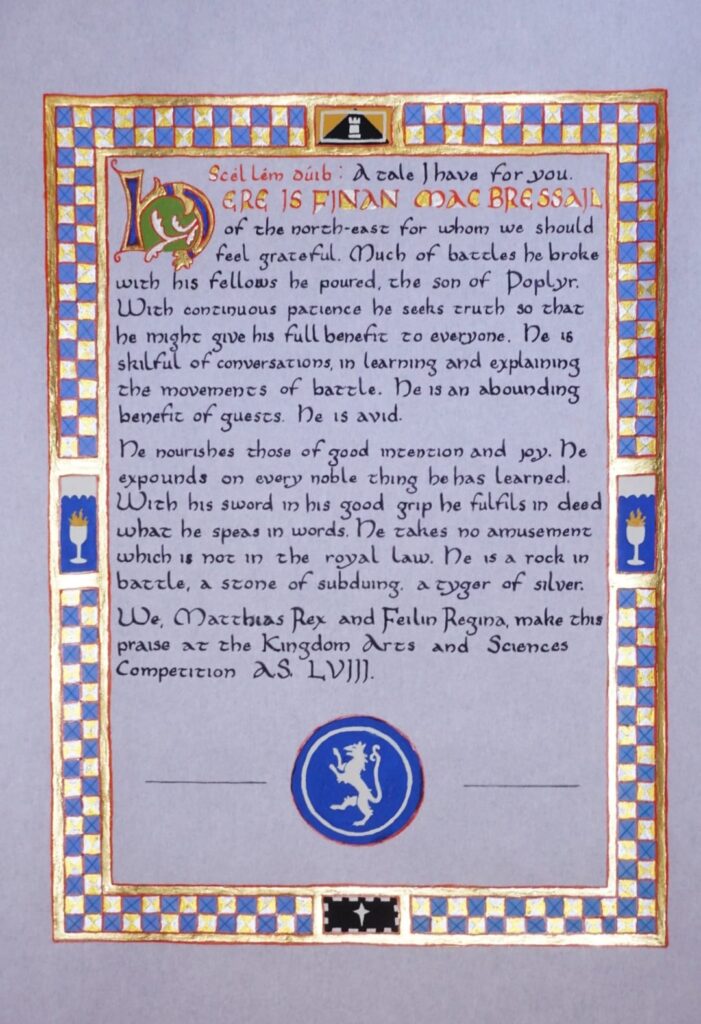I was asked to boast Brenden into the hall for his elevation to Pelican January 2024 at Birka. I created a boast to read during the whole of the procession, which began at the back of the Birka hall and ended (fortunately!) just as the Crane family approached the thrones.
Read more: Pelican Boast for Brenden CraneO crowded hall, come and greet this noble thane
Who captures images and hearts, Brenden Crane.
I’d boast of a man of great humility
Simple, for his virtues are easy to see
So much for his fellows our fine friend doth care
the honors he loves are the honors we share
So much that on paper this man did implore
His boast be an homage to those here before
To people he never knew but in name
Their mark upon friends in his heart lit a flame
That heart, so open, that he wears on his sleeve
While its steady beat inspires us to believe.
Yes, name them he bid me, so name them I will
For while scattered to realms they are with us still.
Our Dear Caroline and beloved Julien,
St Liam and ernst, who serve now much as then,
Don Jehan, Aimee, and of course, Gregory…
Their stories are guides, like the stars ore the sea
Shine bright on the whale road Brenden rows upon
While observing the sky – in night, day, or dawn.
His generous spirit and kindness to all
Have touched many gathered as one in this Hall
He would never suspect when we look at him,
We feel those constellations burning within.
That light he reflects on both pauper and queen,
And casts out the shadows so we can be seen.
This boast with no boasting, I fear is in vain
So proudly I boast SEE OUR FRIEND Brenden Crane.


